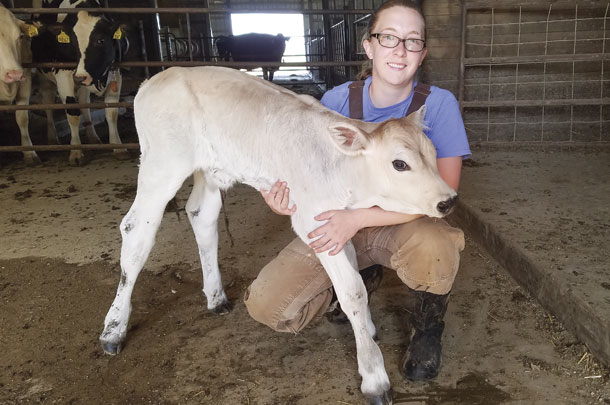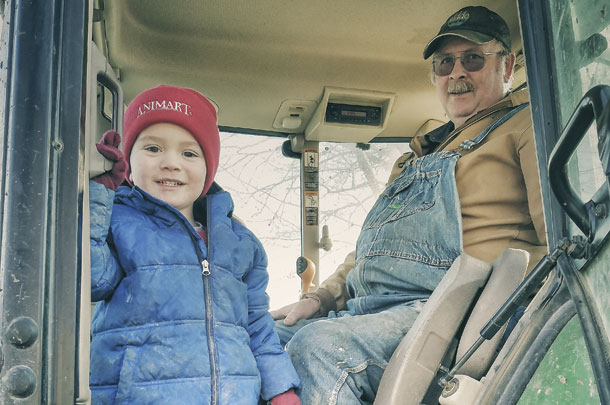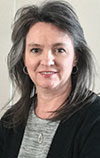How can universities make dairy extension more relevant? Dr. Phil Cardoso’s efforts at the University of Illinois are revolutionizing the way dairies access science.
His Dairy Focus Team (DFT) is also training students to take their classroom knowledge onto farms where they tackle real-world problems. In the past five years, it’s evolved into a truly win-win situation.
In traditional extension efforts, university specialists took the results of campus research onto the farm. But Cardoso was convinced the information needed to flow both ways. “I thought it was really important to get out and see what would help them the most,” he explains.
For his recommendations to meet the specific needs of a dairy, data from a farm needed to be gathered and analyzed so his advice met the specific needs of each farm. That’s where students got involved.
“We would roll up in our university Suburban and out jumped four to six people,” describes Sarah Morrison. “We would pull out our box of supplies, strap on our fanny packs, grab all the tools and notes we would need and soon be spread out all across the farm. In a matter of minutes, we would have people out at the bunks, in the parlor, taking feed samples and walking the pens.”

Morrison, the youngstock chair for the DFT, grew up on her family’s Jersey farm in Leicester, Vermont. Today, she is working toward her doctorate in dairy calf nutrition and health at the University of Illinois.
“The industry is seeking individuals who not only have the technical skills but are able to communicate,” Cardoso says.
Russell Pate, current DFT president, has spoken at multiple extension events as well as with the Illinois Farm Bureau. He explains the mission of the team and the goals they have to help Illinois farmers. Pate, a Visalia, California, native, studies ruminant nutrition as a doctorate student and specifically researches how certain stressors affect performance and immune response.
“The importance is to mix novice and experienced students together,” Cardoso says. Cassandra Skenandore is a perfect example.
“I was not raised on a dairy farm,” Skenandore, a native of Springfield, Illinois, says. “The first time I saw a dairy cow was in the lab of my Animal Science 100 class. Now I have a more clear understanding of extension work and how we bring the latest discoveries and techniques to farmers for more efficient animal production.”
Skenandore eventually led the reproduction team on the DFT. The process had an impact on her, too.
“I got involved in real, applicable reproduction,” she says. “Everything we were doing on the team had a real impact on Illinois dairy farms. And the experience I got helped me get into my Ph.D. program.” Skenandore is studying reproductive sciences at Texas A&M University.
Cardoso’s DFT is organized on a business model, and he is the CEO. Graduate students act as the president and chair of focus areas, which include nutrition, reproduction, youngstock and management. Undergraduates serve as employees within the four key areas while receiving training and mentoring. The team accesses both industry leaders and faculty members as consultants and mentors.
Following their work on 20 farms in 2014, the following key areas were identified statewide:
1. Keeping bedding clean and dry with greater than 95 percent dry matter and less than 3 percent organic matter
2. Maintaining yearly pregnancy rates above 20 percent
3. Growing calves better by adjusting nutrition during the winter
4. Targeting fecal starch between 3 percent and 5 percent
5. Measuring dry matter intake and controlling variation
“The numbers are not coming from the book but from the farmers in the region,” Cardoso says.
“Being a member of the Dairy Focus Team has taught me the value in being scientifically sound and understanding the details behind the research while also being able to take the results and apply them to real problems facing the dairy industry,” Pate says.

But did the farmers take the advice of the team? Don Mackinson of Pontiac, Illinois, did.
“We put pressure mats in our freestall barn rather than the clay and limestone that had been on the floor,” Mackinson says. “Today, in the mornings, all those are full compared to the outside rows that don’t have mats.”
Mackinson milks 140 Holsteins and Ayrshires on his fifth-generation family farm. His great-grandfather came to Illinois in 1865, and the family has been on their current land since 1895. They farm 1,600 acres raising alfalfa, corn and corn silage for their herd.
The team also told Mackinson his hoop barn didn’t have enough air movement. “We installed sprinklers, and the cows now stand and eat much longer,” he says. “They eat and go lie down rather than standing around.”
Cardoso discovered one very important tool to make dairymen change during the process. “Tell [them] the neighbor is doing better,” he shares with a smile and a wink. The team accomplished that by confidentially assigning numbers to the 20 participating dairies. Only the farmer knew the number assigned to his dairy, but he could easily compare and contrast his results with fellow dairymen state-wide.
“All of the farmers I’ve met with really respect Phil and enjoy the energy and expertise he brings to the farm,” Pate says. “They call him ‘the real Dr. Phil.’”
Dairy producers worldwide can access DFT information online (dairyfocus.illinois.edu) with a free, user-friendly website containing videos, Excel tools, newsletters, podcasts and social media links. A section is also available in Spanish. Subscribers reside throughout the U.S. and in more than 40 countries.
The DFT is also affecting research efforts at the university.
“The assessment of real data on fungicide in corn for corn silage has translated in research done on campus in a more controlled way,” Cardoso says. “Farmers had questions if the application of fungicide could interfere with the microbiology of the soil. We are summarizing the data now.”
From on-site data collection to YouTube videos, the DFT is transforming dairy in Illinois – both on farms and on campus. And students are better prepared to serve as key leaders in the dairy industry post-graduation whether their careers take them into research, industry or production agriculture.
“Last year, we sent a survey, on paper, to all dairy farmers in Illinois to follow up on the visit,” Cardoso says. “The idea is to come back to visit the farms in the future.”
Farmers like Mackinson think that’s a great idea. “I’d like to see him come back and go through that again,” he says. “He’s done a really good job.”
Hands-on problem-solving coupled with technology results in dairy extension efforts that make a real difference for Illinois herds. “The DFT offered a nice balance of figuring out important areas that might need a little more attention on farms, finding information relevant to those problems, or researching how we may improve and then bringing it back to the farm,” Morrison says. “I see that as a model I would like to continue in my future career.” ![]()
See more images of University of Illinois Extension at work.
PHOTO 1: Dr. Phil Cardoso’s Dairy Focus Team is organized on a business model addressing the key areas of nutrition, reproduction, youngstock and management. Photo provided by University of Illinois.
PHOTO 2: Sarah Morrison served as the youngstock chair of the University of Illinois Dairy Focus Team. Today, she is working toward her doctorate in dairy calf nutrition and health. Photo provided by Sarah Morrison.
PHOTO 3: Don Mackinson farms 1,600 acres with the help of his 3-year-old grandson, Eli Faber. The family raises all the alfalfa, corn and corn silage for their herd of 140 cows. Photo provided by Mary Mackinson Faber.
Karena Elliott is an international freelance writer. She makes her home in Amarillo, Texas.







